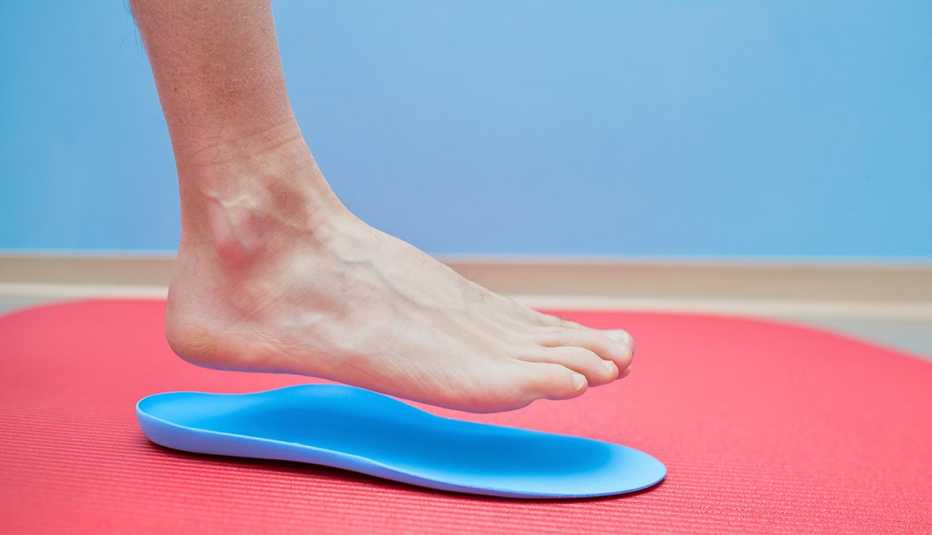AARP Hearing Center


If you're feeling your daily jogs or runs in your feet, calves or knees more than you used to, it may be time for a footwear tweak. As you approach 50, gradual changes like the diminishing fat cushion in the balls of feet can add up to palpable aches and pain, says Paul Langer, a podiatrist who specializes in sports medicine at Twin Cities Orthopedics in Minneapolis.
Along with the shrinking of this plantar fat pad, the natural loss of foot and leg elasticity — combined with the repeated pounding of 1,000 to 1,500 steps each running mile — can result in a variety of foot and lower extremity problems. They include plantar fasciitis, which causes heel pain; Achilles tendinitis in the tendon that connects the calf muscle to the heel bone; arthritis in the big-toe joint; and metatarsalgia of the forefoot, which causes pain in the ball of the foot.
The good news? Proper temporary orthotics can ease or eliminate pain from most of these problems, and they can also help those whose lifelong flat feet or high arches start to create later-in-life aches. Permanent in-shoe aids can also help runners who have body irregularities, like one leg being longer than the other.
Finding the right fit for you
Tips for Avoiding Running Injuries
Smart steps to take to save your feet
Get the right shoes.
Use the foot scanner at a good running shoe store to get an accurate size and shoe type. From there, try on several pairs and choose what feels most comfortable. Also consider buying two pairs: Research indicates that alternating running shoes on a regular basis helps to avoid injuries.
Stretch — and strengthen.
While both strength training and post-run stretching are important for runners, strength training can be more critical for avoiding injury, Langer says. Achilles tendinitis, one of the most common injuries for runners over 40, for instance, can be cured in six to eight weeks by doing eccentric calf raises or Achilles tendon exercises, which also improve elasticity.
That said, finding the right insert may take a little trial and error. “I always tell my patients that prescribing orthotics isn't like prescribing medication,” Langer says. “We don't know the right dosage, and that's partly because we can't tell when the patient is comfortable. And we don't know what kind of pressure relief or correction is needed to make someone's pain go away.” He adds, “Each person is very individual, as far as how they might respond to footwear changes, or what we call ‘biomechanical intervention.’ “
To get started, you'll want to visit a podiatrist — ideally one practicing sports medicine. The American Podiatric Medical Association (apma.org) website lists podiatrists who are also members of the American Academy of Podiatric Sports Medicine. Take your current pair of running shoes and socks to your first appointment. A study done in Australia pointed out that between 68 and 78 percent of the population are wearing shoes that don't fit them properly. A podiatrist can check yours to see if they are the right fit for your feet, notes Kathleen Stone, a podiatrist and former APMA president.

































































More on health
8 Great Reasons to Walk More
It’s great for your heart and weight, but the benefits go furtherHow to Shop for the Shoes That Fit Properly
Follow these tips to find a truly comfortable pair
Why Do My Feet Hurt So Much?
Common problems with aging toes, heels and arches — and how to find relief